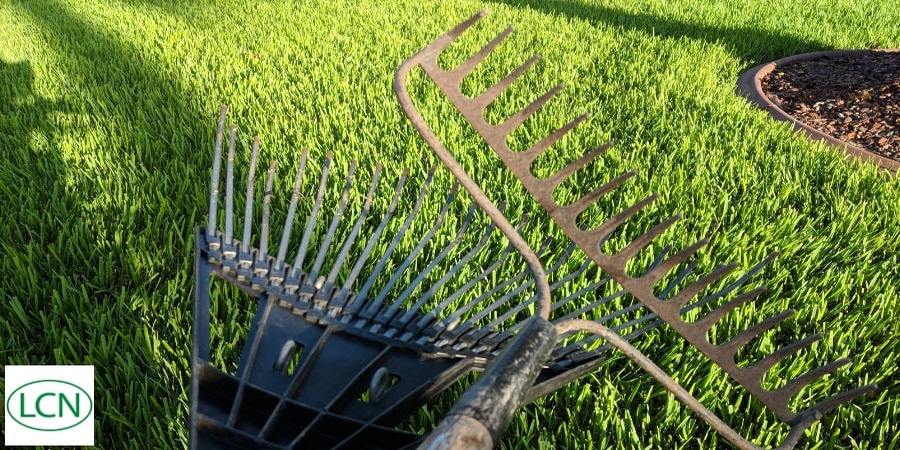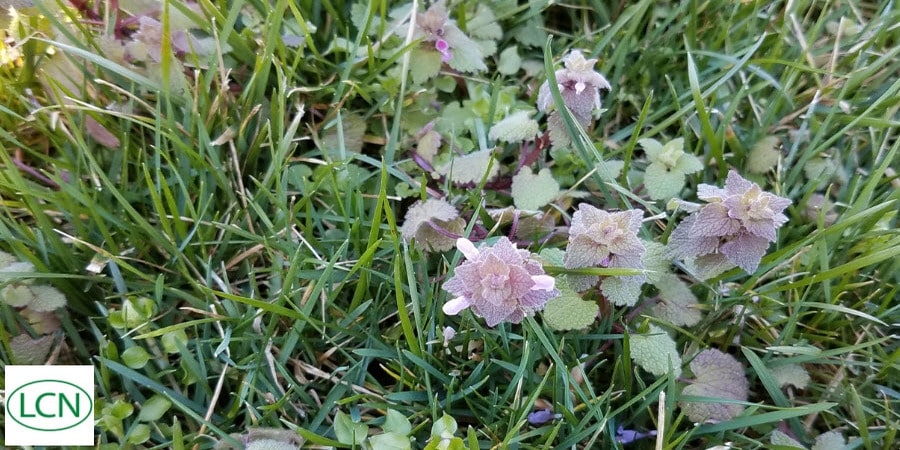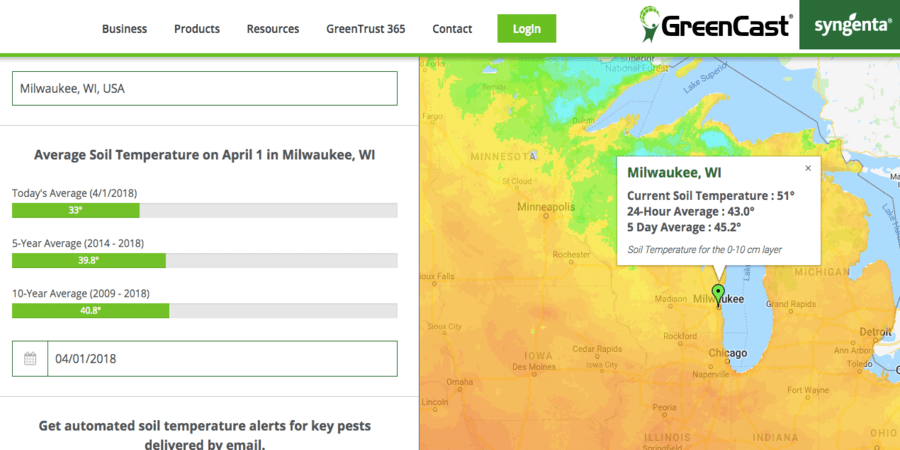Late Fall Dormant Lawn Seeding
- "The Lawn Care Nut"November 3, 2018
Every year here in the fall I start getting questions about dormant lawn seeding. I think it’s because most of you don’t want to admit that your lawn season is coming to an end and you want an excuse to throw something down! Trust me, I understand this, which is why I moved to Southwest Florida where I can enjoy the mow all year-round!
That said, I do think late fall/early winter seeding can be a good option for a few of you, especially if you have larger open bare areas.
What Is Dormant Lawn Seeding?
Dormant seeding is the practice of seeding the lawn late enough in the year so it sits over winter and germinates very early the following spring when melting snow soaks it, warming temps stimulate it, and nourishing spring rains keep it growing and rooting. The idea is to get a leg up on the season.

If you are going to seed, make sure you have good rakes on hand to get the seed scratched in. Photo by Allyn Hane
Simply put, you want to get your seed down and scratched in (important) just before the ground freezes, then hope for a snow cover quickly to follow. This window of time will be different for everyone of you so let me give you some specifics to consider:
First off, if you have bluegrass or fescue (cool season turf) but you don’t get snow cover, then I don’t recommend this practice. We need the snow to help insulate our seed from outside interference during the harsh winter. Foot traffic, animals/birds, wind or heavy rain and sun - all of these hitting your seed over winter can reduce the amount of germination you get. In the case of dormant seeding, snow is a literal blanket we need.
Next, just like with any other seeding project, you need to ensure seed-to-soil contact or you won’t get much results. This is why the ground cannot be frozen. This is also why I recommend that you only really attempt dormant seeding in areas that are less than 30% turf or even completely bare. Throw down the seed, use a metal rake to scratch it in good, and give it a light watering just to help pack everything in. From there, keep the foot traffic off and hope for the best! But remember, I only recommend this in extreme cases where you have large areas with almost no turf and you have no other choice.

Another consideration are early spring weeds like winter annual henbit. If you dormant seeded the previous fall, you shouldn’t spray herbicides at all, leaving these guys to flourish.
Consider Next Spring and CrabGrass
Lastly, let’s consider early spring pre-emergents. If you are going to use a pre-emergent herbicide like prodiamine early in the season, then you may have to change your plans. Read the label on the product you by of course, but most will have a 45 day or longer re-seed window. Without getting into too much detail, that means you should not apply that herbicide until 45 days after initial germination of your seed. Cool season grass seeded into the ground will germinate if soil temps are over 50 degrees, but really closer to 60 is ideal. If I look at the GreenCast average soil temperature reading for Milwaukee for April 1, you will see the average over the last 10 years is 40 degrees. Remember, this is the average SOIL temperature for April 1 in Milwaukee. Even at this late date, we would not see germination yet, but the crabgrass germination window is also very close. This means you probably won’t be able to apply a pre-emergent herbicide until sometime in Mid-May and that is getting quite late if you also plan to stop a crabgrass invasion.

There is a give and take to everything you do in the lawn, and this is one of those. This is another reason why I recommend late fall dormant seeding only if you have bare areas. In these cases, you really have no choice but to seed and hope the crabgrass pressure is minimal enough that you can control it by manual means or with light spot sprays of post-emergent herbicides later on down into the season.
If you do decide to go ahead with a dormant seeding, I recommend you get a good shot of Milorganite down sometime soon after the ground thaws in spring. You may also consider supplemental irrigation if you are not getting daily soaking spring rains. Just as with any seeding, we need lots and lots of water to get things moving, especially when it’s cold outside!
If you are unsure about trying this practice, why not choose one small spot and test it. Pick out your largest bare area and seed it in good, then next spring, hope for the best, but most of all, take notes on what happens and how you deal with it so you are better equipped the next time. And by all means, don’t miss the window next year! Get that aeration and seeding in much earlier so you aren’t playing catch up!

